Inquiry and Organization after the George Floyd Uprising
Jasper Bernes
As conclusion to The Future of Revolution and its final chapter, “Inquiry, Organization, and the Long 1968,” the short excerpt below analyzes the George Floyd Uprising as example of revolutionary movement in our time, confronting similar impasses to struggles the world over. What is new and what is old about revolution in the 21st century? Today as always suspension of the armed power of the state, a process that unfolds by degrees, remains its first condition, allowing for the socialization of wealth by classless, moneyless, stateless human community. Bernes’s discussion of technical inquiry — mapping the forces of production — builds upon an earlier analysis of organized proletarian inquiry and inquiry as organization since WWII. Transforming the accumulated wealth of capitalism into open-ended classless society, rendering it tractable and transparent to all, will require a living inventory of resources, capacities, and needs, accounting for each other as we account for things.
Other languages: Español
Sometimes it looks like this. In face of some new austerity, injustice, crisis, or disaster, a mass movement gathers eccentric to production, impedes circulation, fights with the police, loots and burns. It is a mass strike yet not a strike. It has its ebbs and flows, its centrifugal and centripetal dynamics, spiraling out from the city center into the suburbs or spiraling inward from suburbs to center. It has no formal systematic means of decision-making or accountability, though these tend to emerge on a local, ad hoc basis, ripe for political capture by actors bad or good. Neither is there any sense of common objective, in the absence of which a kind of blank maximalism dominates. The options are to fight harder or not at all. Tactical brilliance abounds in the absence of any strategy.
This is a movement limited on the one side by the cops and on the other by the economy. It cannot penetrate into production; work continues, for the most part, except where mobilizations become so massive as to shut down the economy indirectly. Inasmuch as it becomes revolutionary, it is a political revolution only and a superficial one at that, able to oust this or that hated leader, but unable to alter the economy or the repressive state apparatus, both of which tend to harden in the face of insurrectionary assault. Politicization of the revolutionary movement leads to electoral dead ends, suicidal referenda, or at best the passage of a law which capital will later nullify. The dead weight of the police and behind it the army stands over and against it. This leads often to a kind of inwardness, an emphasis on ethical values anticipatory of communism, a desire to build the new world in the shell of the old, which can’t be realized without extension and intensification of the movement, without the appropriation of social wealth.
Absent some new element, this movement will fail, as others have. It will be crushed or wither away, its partisans scattered. What would it require to succeed? History itself will need to give birth to a self-reflexive revolutionary organization able to draw in the vast majority of society, spanning workplace and home, town and country, old and young, freely and transparently producing for the free, common use of its members. From commune and council we can derive the logic of such organization but not its sufficient historical conditions, its emergence from and as the disaster of capital.
Organize now or wait for an opportune moment? Yes. In the long run, what will have succeeded is as likely to be the patient work of generations as the quick work of ecstatic weeks. Movements of years and movements of months converge during revolutionary days. But in such moments, no question yes or no is asked, and thus the fact of asking is its own answer. The militant minority, the movement of communists, is a transistor, a black box of some function, but it cannot transmit a signal that does not exist. At the same time, its own noise introduces real infidelities, and so transmission is always to some degree clarification. To seek out and amplify what is critical within proletarian practice, that which is cognizant of its own limits and the need to overcome them, this is the unavoidable intermediary task.
What will have worked? It will have to have been an example selected from proletarian struggle and refined, clarified by struggle itself — the theory of the communist example gleaned from the theory and practice of Jan Appel is the theory of replicable action, whose proliferation, extension, and intensification would produce communism. The proliferation of the communist measure spreads by way of the communist measure itself and thus does not need to be formulated before the fact. And yet these measures will spread, or not, at rates that have to do with their mediation by existing networks and relations among proletarians. Here is where Appel’s catalytic theory of the party remains relevant. Formal or not, the party is that which catalyzes the communist measure — in Appel’s case, the council — it is the critical medium of its transmission in and through practice. It emerges as a consequence of the clarifying action of the communist measure itself, which finds its pledges even where no formal organization exists, sharpening contradictions everywhere.

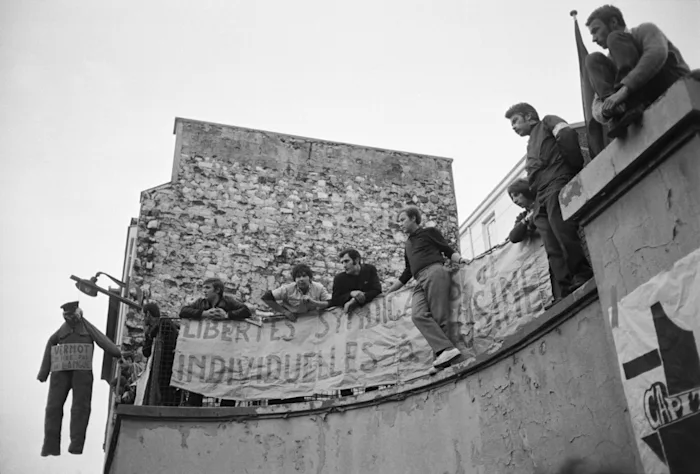
To reflect proletarian struggles, its own or others, to amplify them critically, is therefore the first task of theory. Action that matters is conjunct action, which in its meanings shows itself to be aware of action with others, near or far, past, present, and future, and therefore leads to the compounding of action. What matters organizationally are sites that broadcast and amplify the reproduction of struggle. The task is to establish correspondences, networks in which communist resonances can proliferate.
Therefore the first task for the movement of communists is to observe present struggles, their own and those proximate first and foremost, to reflect them critically — which is to say, from the standpoint of communism and its logical contours. Lenin’s newspaper-as-party is an organizational cliché, but it rests upon a truism that every communist organization is a medium of communication for action — this is true of the anti-Leninist correspondence committees of the council communist revival as well. The difference is that, in the latter case, these networks are not places simply for the consolidation of a hegemonic leadership but for the critical proliferation of struggle, the clarification of which will reveal communist consensus as it exists. The goal is not to lead a movement or simply to expand it but to facilitate the spread of revolutionary examples chosen by struggle itself.
Inquiry into class struggle is therefore the bailiwick of the ultraleft, as we have come to define it. The best and most intricately observed and analyzed writing on contemporary struggles is often produced by groups influenced in some way by the council communist revival or its critique from the standpoint of communization — from Endnotes to Théorie Communiste, Chuang to Angry Workers, from Insurgent Notes to Field Notes at the Brooklyn Rail — and it is from these projects, and many others, that I derive my clarification and synthesis of the logic of the current era of struggles. Those who abjure any role in leading struggles are often the best at hearing what they have to say without prejudice, projection, or hyperbole. And while these projects are hardly a relay for proletarian action, when movements do emerge they develop media in which similar debates and discussions occur, and similar knowledge is transmitted.
The brief sketch with which I began this chapter might be a description of any number of recent uprisings and social movements: the Estallido Social in Chile, the gilets jaunes in France, the 2020 George Floyd Uprising (GFU) in the US, not to mention many other examples from the last twenty years. In the case of the latter, there has been very little written about the GFU outside of the journals mentioned above, the project Ill Will (also loosely ultraleft in orientation), a collection edited by the Vortex Group and published by PM Press (mostly containing articles published in Ill Will), and the book States of Incarceration by Zhandarka Kurti and Jarrod Shanahan, published by Field Notes.1 The absence of meaningful reflection on the GFU has much to do with what Idris Robinson has described as its “denial and disarticulation” by the left, some large portion of which remained transfixed by the Bernie Sanders phenomenon and the media vortex of Donald Trump.2 In a topsy-turvy early pandemic moment of economic and political chaos, with Trump and his networks engaging in hyperbolic and apocalyptic response to the uprising, liberals and the left produced their own conspiratorial constructions, in which the riots were in a few places limited expressions of a justified discontent and elsewhere the action of malfeasant provocateurs and criminal opportunists. For a brief moment, however, other channels flared bright with the revolutionary example, first and foremost the burning of the third precinct police station in Minneapolis. The movement spread through a mimetic (and even “memetic”) contagion, a network of proliferating practices which extended through hundreds of US cities in the first few days of the uprising.3 These were practices both new and old, refinements of an existing repertoire of tactics, spread through semi-private messaging apps, partly open, partly closed.
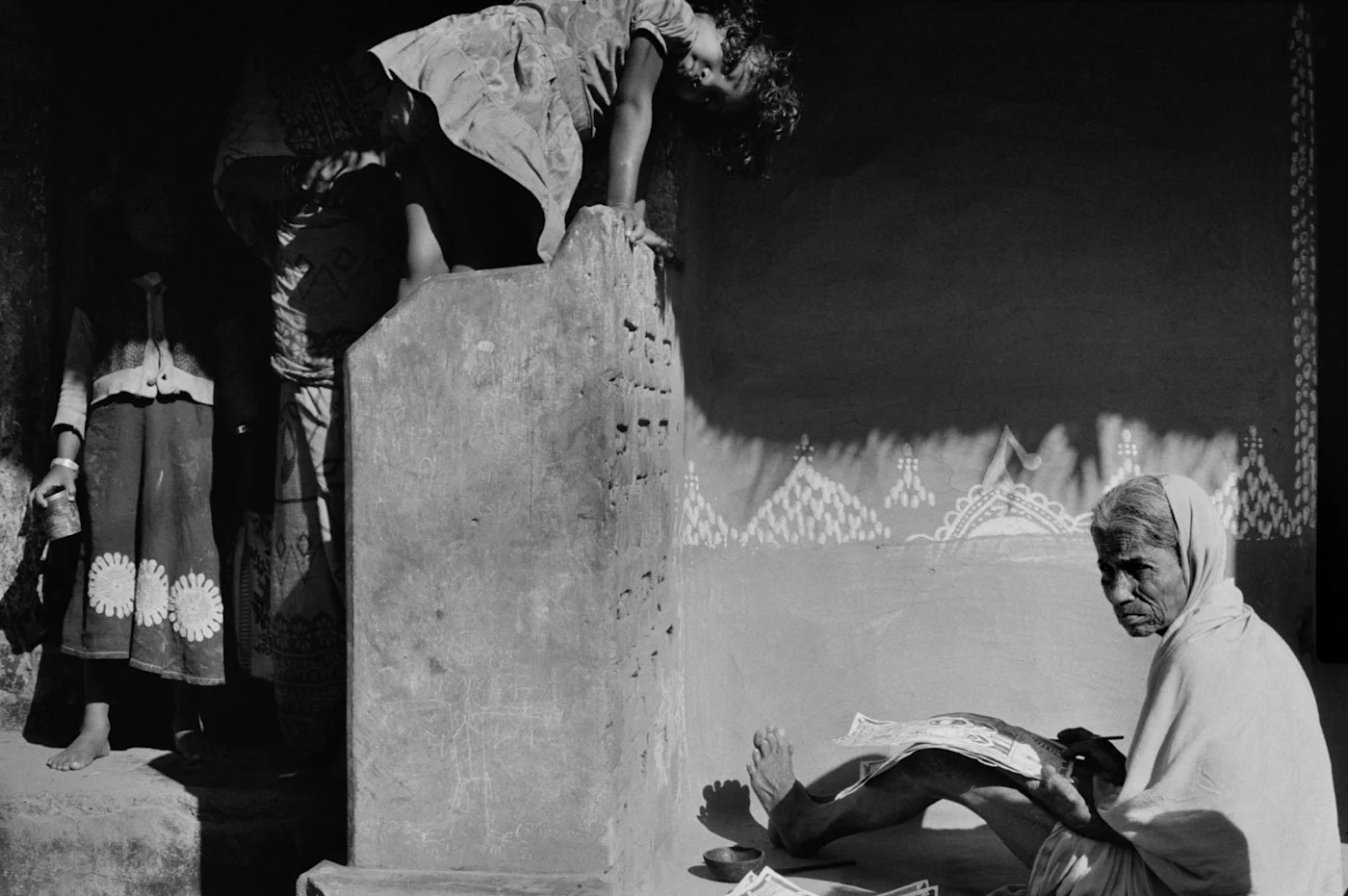
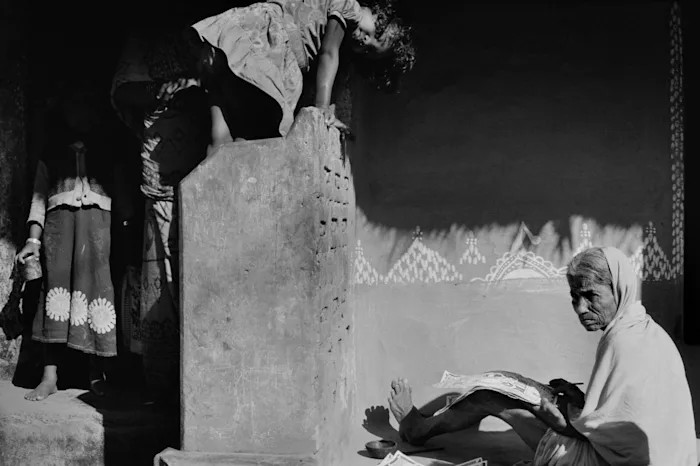
The first task of any revolution is the disarming of the police and the arming of the proletariat. This process cannot be accomplished overnight, as we’ve seen. Even the complete collapse of the German empire and its army in 1918 did not fully abolish the armed power of the state — the conservative officers of the Reich, and their reformed units, competed with the councils and the workers’ militias for control. We saw glimpses of this collapse of armed state power during the George Floyd Uprising. The spread of the movement from Minneapolis was in part catalyzed by the revolutionary example of the third precinct set on fire — here was a replicable action, both rallying cry and the thing itself, an act which called for more acts, for its insurrectionary reproduction. The destruction of the third precinct was, in part, the result of a tactical retreat by the police, a demobilization not outright defeat, after the precinct was besieged by a combination of armed and nonviolent protestors. Here, too, we saw the replication of new “frontliner tactics,” in part learned from the Hong Kong uprising of 2018 — the tactical use of lasers, umbrellas, and fireworks to combat and defend oneself from the police.
The movement was characterized, however, by the inability of this action to spread. In early June, in Seattle, where crowds were particularly focused on fighting with the police, skirmishes in front of the police station in the liberal Capitol Hill district led to a similar demobilization, as officers retreated from the building. Some present wanted to burn this police station, too, and attempted to do so, but were restrained by the informal militia present, who were there ostensibly to defend against attacks from MAGA and neo-fascist counter-protestors but in this instance were policing the movement. The decision was instead made to occupy, barricade, and defend the area, now a police-free autonomous zone. Here was another potentially replicable form selected by struggle itself, the autonomous zone, and such zones had already formed in Minneapolis at the site where George Floyd was murdered and would form in other areas as well, as informal loci for the movement. For example, after the police murder of Rayshard Brooks at a Wendy’s in Atlanta later in the summer, abolitionist crowds surrounded the fast-food restaurant, burned it, and established an autonomous zone there. That these two revolutionary examples — burning and occupying — were at odds in Seattle, when it is clear that destroying police power and establishing police-free zones are complementary activities, even perhaps activities that presuppose each other, indicates the incoherence of the movement and its undefined goals.
While the burning of police stations did not spread through US cities, arson itself did. One of the first conclusions of an inquiry into the GFU is that fire is enormously effective in rendering American cities ungovernable. Fire demobilizes the police, a pattern repeated in city after city. Once a certain number of fires occur, police shift to passive protection of firefighters, traffic control, and the defense of key sites. This establishes open hunting season on private property, as inchoate looting in the city centers, near sites of confrontation, becomes increasingly organized, brazen, and extensive, with new and existing networks choosing different, poorly guarded targets, usually suburban shopping malls, at an increasing radius from the city center, and conducted with vehicles rather than on foot. In many cities this police holiday lasted for three to five nights, after which point a natural slowdown in looting and arson allowed the police to reestablish control. If they could not, the National Guard would be called in, as happened to some degree in over thirty-one states. By early June, eighty cities were under curfew orders.
This was the critical moment for the movement. Further insurrectionary escalation was blocked, except where organized factions could push things forward, as happened in Portland, leading to a unique sequence of struggle there, or where subsequent local events, such as the Rayshard Brooks murder, reignited a local sequence. Fire was the medium of this movement in its early days but also serves as a potent metaphor for its internal dynamic. Fire is uncontrollable and directed by physical variables not knowable in advance, but it also erodes its own conditions for reproduction — it burns out, like riots burn out, leaving itself without air or fuel. For Luxemburg, we will remember, this is the central character of movements, their periodic rhythm, and such a moment might be the precursor for later intensification if this pause allows for its spread to new, fresher material, carrying embers into the haystacks of the town. Something like this did occur, a capillarial proliferation of the movement and its slogans and watchwords in early June and leading up to the historically resonant holidays of Juneteenth and July Fourth, but these did not become the basis for a later re-intensification of the movement. One could no doubt fill a small library with the well-meaning but empty abolitionist legislation proposed during those first weeks, then neutered, the opportunist declarations of opposition to antiblack racism and police violence by organizations, corporations, municipalities, and everyone with a platform, to be forgotten at the first chance.
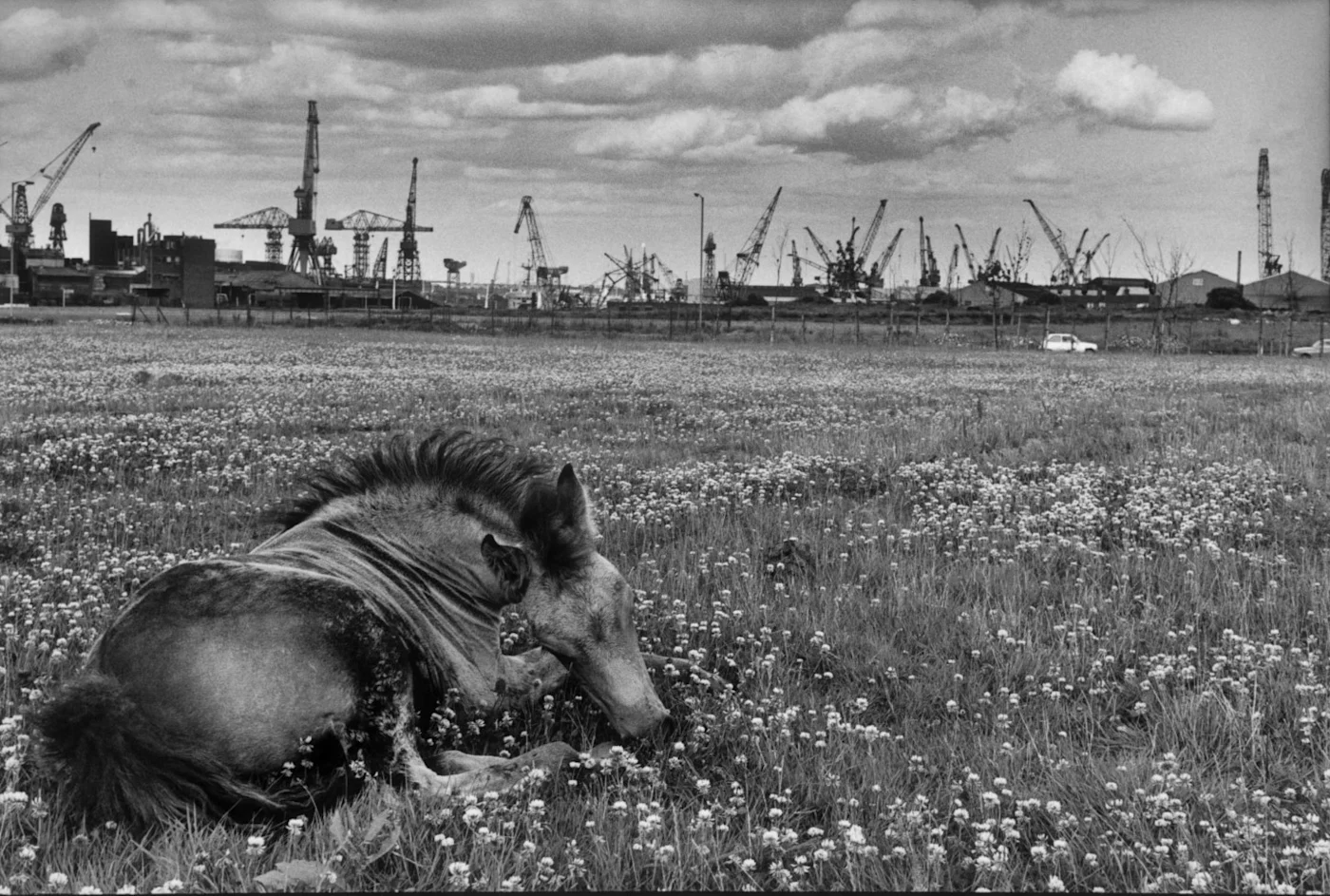
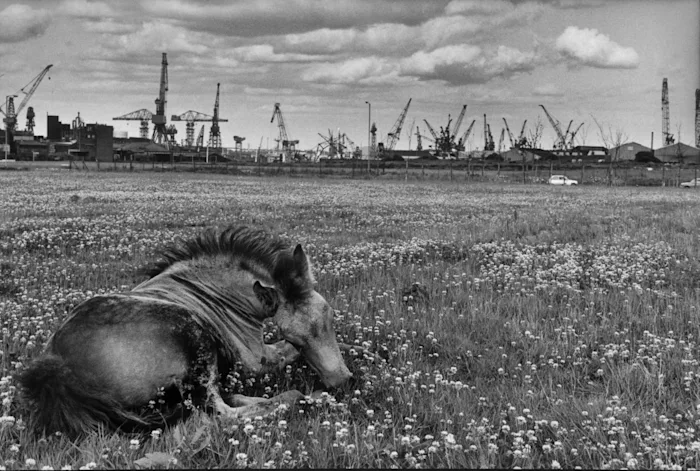
As the looting dispersed and became more technically complex, it also became less communist, festive, and collective, increasingly monopolized by criminal rackets which would extend their insurrectionary enterprises into the summer and beyond, focusing on high-value targets. After a few weeks of big demonstrations and marches called by liberal groups, the movement became increasingly dominated by militants looking for ways to extend the confrontation. In Portland, where ritual antipolice marches continued nightly throughout June, engaging in continuous skirmishes with the police around the federal building, Trump federalized the police response, effectively creating a new political locus for the movement in Trump. This was what allowed the movement to extend itself into July, as Trump had effectively turned the uprising into a referendum on national history and the unfinished work of Black Reconstruction, made especially clear in the wave of activist removals of Confederate statues, often performed preemptively by the authorities. These topplings extended beyond the Confederates, however, targeting genocidal Reconstructionists as well, and became a way for the movement to articulate its values by way of American history.
Otherwise the movement seemed to struggle to know itself or be known — a paranoid epistemology attended it from the beginning. Who was it? The multiracial character of the uprising, especially of its youth participants, was treated as a scandal, to be explained as police provocation or white-supremacist infiltration. While the right-wing media treated it as a Democrat-led insurrection, the liberal media condoned the riots as justifiable outrage, downplaying their scope and violence, and pointing to the large peaceful daytime marches that came after the insurrectionary days as the real heart of the movement. In the autonomous zones, where coordination and extension might have occurred, the practical problems of police abolition made this impossible. These were effectively lawless zones, which made them areas of opportunity for people of all sorts. Chaotic gun battles occurred, and people were shot by the movement’s defenders, who were clearly neither police nor fascist vigilantes. This is not to say that these autonomous zones could not have been stabilized and extended, but this would have required the establishment of an ethical and organizational consistency rendering them spaces worth fighting for — they would need to be free of the police, but also spaces of real freedom and autonomy for people. In Minneapolis, this did occur to a degree in the early days. A squatted hotel was opened, and people housed for free. Depots were created where looted goods were distributed, but such ventures would have needed to be extended, deepened, and given replicable consistency. Here inquiry must become speculative.
Everyone hates the police, but no one knows what to do about them. The accomplishment of the George Floyd Uprising was its revelation of this fundamental unanimity, which even liberals might admit. Even the police hate the police. The name this unanimity was given by the movement was “abolition” — abolish the police! This was its cry, and the burning of the third precinct its objective correlative. But it is impossible to imagine the abolition of the police independent of the abolition of class society, the inauguration of communism. To burn two, three, four, many police stations seems suicidal absent the possibility of cultivating a form of life that could do without the police. Nor can one build the new world in the burnt-out husks of the former — one needs its wealth, its real resources and capabilities. Thus abolition comes to mean everything and nothing. Because the police are an absolute enemy, an absolute bad, one can treat the struggle with them as zero-sum. Any reduction in prison is good. Any reduction in police violence is good, and thus all reforms are abolitionist. But this becomes true, also, of anything that practically improves people’s lives.
And yet one must work with the terms which the proletariat has already chosen, as Jan Appel shows us, and in the case of the GFU this is clear. The name of the revolutionary example is “abolition,” but it has not yet found its form, whether arson or autonomous zone or something else. Abolition was the name for the soviet without councils of the movement and its revolutionary partisans. And as with the soviets, its meaning was undetermined — it needed a restriction of its participants, a delimitation of its functions. This is how calls for black leadership of the movement could have been answered, not simply by persons but in the fundamental commitment of the movement to abolition, not just the overcoming of the police but the long history of racial domination in the US, the unfinished work of the abolition of slavery — which is to say, the abolition of class society and, with it, racialization. What if, in Minneapolis or somewhere else, in these early days, a vast abolition assembly were held, the result of which was the formation of an abolition committee and the permanent occupation of a given space? What if this spread to other cities? What if these committees could wax and wane as the movement went through its phases, extending the energies of some initial moment into a subsequent insurrectionary heightening? These would be spaces where the meaning of abolition would have to be determined practically, both through the production of zones free from policing and through a practical overcoming of the structures of antiblack racism, both internal and external. This would naturally involve the leadership and participation of black proletarians, but just as importantly the leadership and participation of those fundamentally committed to abolition, in all its disclosed meanings.
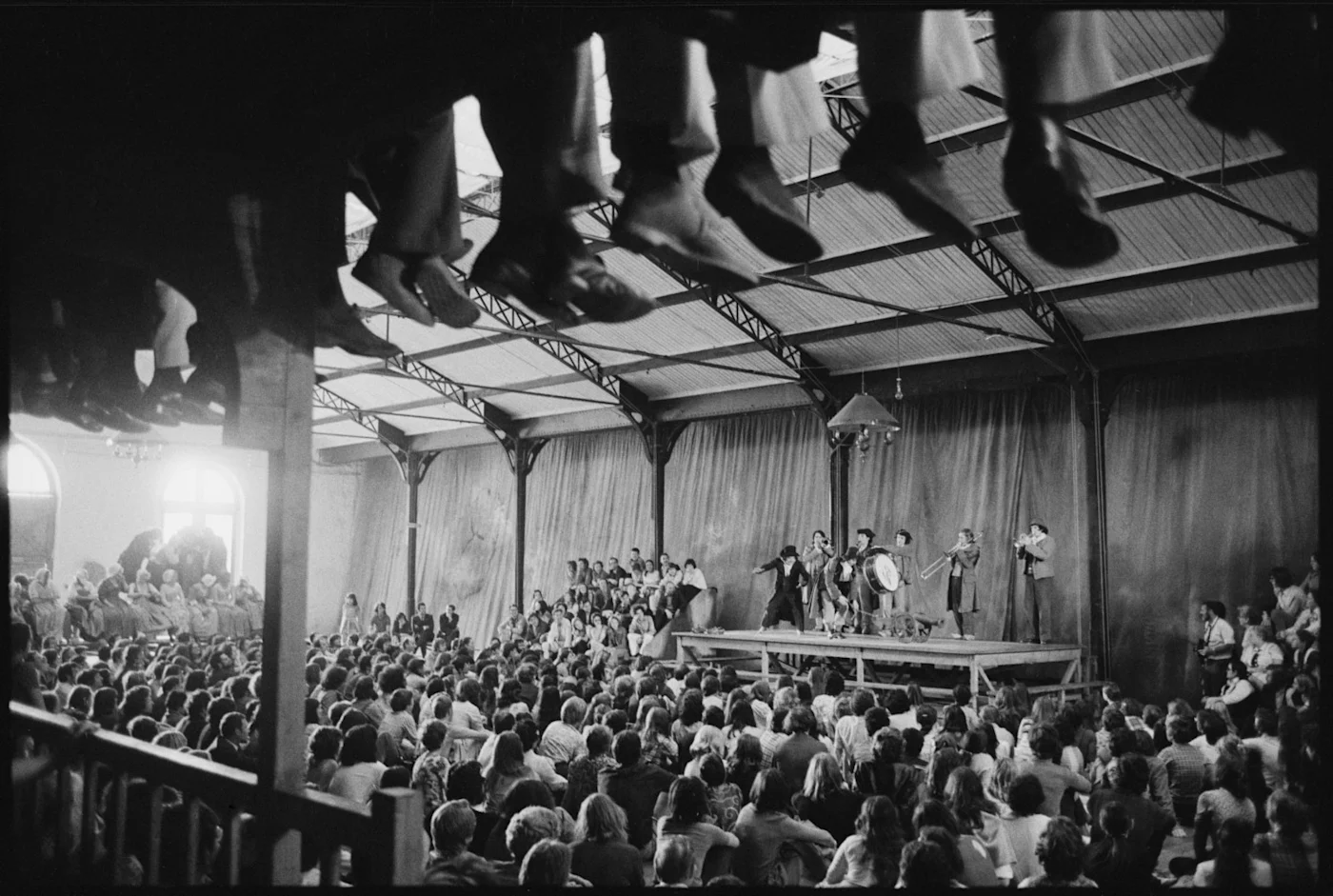
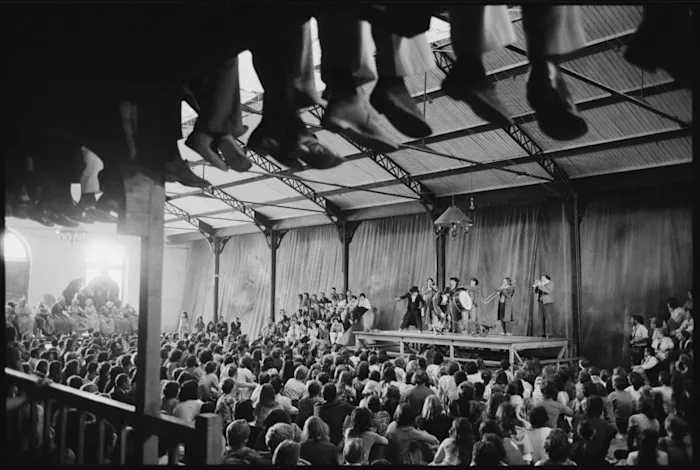
The abolition committee in my construction is a heuristic fiction, a placeholder, a name for a form that has not emerged. It should not be taken literally, and such a form can become an answer only to questions posed by movements themselves — they emerge by necessity and not by choice, and as an expression of the proletarian, communist content of such a movement. To call for committees or councils absent such a moment is to shout into the void. Nonetheless, this fiction is useful in probing certain functions that would need to be accomplished if the movement were to succeed in becoming revolutionary, and obviously requires a great deal of abstraction from the particular issues of the GFU. What would these abolition committees need to do, other than abolish class society and with it the proletariat and themselves? First and foremost they would need to serve as a critical reflector and amplifier for the content of struggle itself, for the distribution of viable tactics and forms that might sharpen the movement’s means and clarify its ends, extending the energies of the riots into new social categories and spaces. They would need to catalyze action among non-militants and non-activists, in workplaces, schools, prisons. They would need to establish correspondences, through print and other media, and in this way allow for self-reflexivity. They would need to establish open entry points, ways that people can get involved, both in real life and online.
From the beginning we can expect these committees would be dominated by opportunist or at best reformist groups and steered toward legislation and electoral work. A tendency toward the creation of a constitutional amendment or national referendum would likely emerge, as happened with the gilets jaunes in France and the Estallido Social in Chile, and earlier with Podemos in Spain and Syriza in Greece. These tendencies would need to be resisted by the cultivation of organizational capacity outside the milieus typical of the left — such resistance would require the extension of such developments into workplaces and neighborhoods and the cultivation of real capacity for self-organization there, which might resist the politicization of the movement. Coordination must be sought outside the state. Here is where inquiry could become the very form of organization. The abolition committees could engage not only in practical work but in speculative work — What would abolition look like? What would it require?
While riots, occupations, blockades, sabotage, and expropriation unfolded, abolition inquiry committees could essentially develop plans for communism. Their founding questions would be: What would you do if state power vanished today? What would you do if there were no more police, and behind them no more army? What would you do if all the prisons burned? A key task for such inquiry committees would be technical inquiry into the conditions of capitalist production and everyday life. The appropriation and transformation of existing means of production into communist production and distribution are also the appropriation and transformation of the knowledge corresponding to such means, their virtual dimension, rendering them transparent and tractable to anyone and everyone. This is a speculative process because the question for communists is not just how does this work but how could it work. A communist looks at a power plant, a factory, a supermarket, a fleet of buses, or a farm always with an eye to what it could be in communism, which is not at all what it is in capitalism. But what it could be is fundamentally determined by what it is, and therefore knowledge of the database of existing resources is the first step toward producing a real story of communism from them.
What do people do for work where you live? What is produced, using what inputs? Where does the electricity come from? The water? How are the markets supplied? Few of us know the answers to these questions with any depth. For Appel, the role of the communist party was to provide a framework, the councils, which is also to say its theory. The Grundprinzipien is a model that can be applied through a deliberative appropriation. But here I think of a framework at a more fundamental level, not a blueprint but a map with the location of the elements from which a blueprint might be constructed by the builders themselves.4 Less a common plan than a plan for a common plan. The construction of the map would also be in part a work of joining those possessing its constituent knowledge, building connections with people who work for the water department, the power provider, who distribute to the markets. The idea is to imagine an atlas of communist reproduction, with all the knowledge a communist movement might need to begin reproducing itself, at some given insurrectionary juncture. The collection and refinement of such data entirely before the fact is, of course, impossible, but this does not mean nothing can be collected. Any clarification beforehand is likely to help.

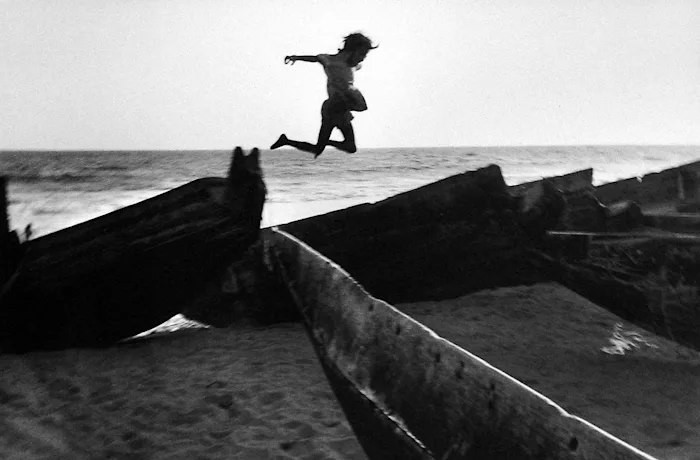
These maps can be useful during the mass strike phase of a movement as well, long before the question of communization or socialization of wealth can be raised. During the initial moment of the George Floyd Uprising, when the police were paralyzed by the work of fire suppression, nearly anything that militants wanted to do could have been done, but crowds lacked clear goals or targets. They did not know, aside from a few key landmarks, where the sites of power lay. The distribution of a map with targets, as well as necessary tools, could have gone a long way to catalyzing militant action in this moment. The selection of such targets requires sensitivity to the revolutionary example — one picks targets which the movement is likely to recognize, merely by name or by sight, as valid.
Key here is the work of what I have called “counterlogistics” — mapping capitalist circulation and seeking out its chokepoints, places where a blockade can interrupt production.5 Ports, airports, logistical hubs, and intermodal exchanges are central here. We live in the era of the protest blockade, a blockade which, when stationary, becomes an occupation, a bloccupation. Proletarian movements increasingly seek their power over production outside of production, but this is a power that must penetrate to the heart of production. It must interrupt capitalist production, either by winning workers over to its side and convincing them to down their tools or making it impossible for production to continue. Here classical workers’ inquiry and the development of base unions or workplace committees is essential — these movements must seek out allies within production. How this happens is one of the essential questions of communist research in our moment.
The weakness of present movements discloses their potential strengths. When proletarians, who may be workers but have no opportunities to intervene in their own workplaces, blockade the workplaces of other proletarians, they reveal the antinomies of self-organization, the need for self-organization to become the with-other-organization of the universal commune. In examining the history of the pre-revolutionary mass strike, we see two deviations from the path of communism — the soviets or councils are declared before proletarians are actively in control of their workplaces; or alternately workers seize their workplaces but without the establishment of coordinative mechanism, forcing them to rely on the state as negotiator, or arbiter, of socialization as nationalization. If the workers organize only for themselves, collectivizing their workplace on their own, disconnected from other expropriations, then they are forced to rely on the market (which will punish them), on volunteerism (which will wane), or the state (which will betray them to the capitalist class). But if they organize only for each other, forming the councils without an intensive basification in workplaces or other centers of proletarian life, then they fail to meaningfully change the conditions of everyday life and lose the chance to incorporate the vast majority in a communist project. The blockaders treat capital from the standpoint of communism, as common property, belonging to everyone and no one. They recognize that capital is a social relation involving everyone, the proletariat first and foremost, in the project of the common destruction of class society by a vastly proletarian humanity. If a factory is manufacturing weapons used to kill you, it is not merely the concerns of its workers. But, for the workers, those capitals are the means of survival — their ethical claim is real, though pertinent only to capital. If you keep them from work and bankrupt their company, they will starve absent other means to reproduce themselves.
Solutions to this dilemma can emerge only through antagonism diagonal to these categories. Since 1968, struggle has emerged eccentric to production, as one focus of an ellipse having its other in the quieted workplace. Only struggle both within and without production can overcome this divide. The name which Théorie Communiste has developed for such proto-communist struggle is l’écart, which gives to the event the name of the problem it overcomes — the “swerve” between circulation struggle and the missing focus of production which overcomes the “rift” or “gap” between proletarian struggle and its object, sedimented in the distribution of the means of production.6
If something like councils were to emerge in the decades to come, it is likely they would not be workers’ councils in the strict sense. The ellipse with its two foci would need collapse into the circle of communist reproduction, but this would be the contraction not to the prior center in the workplace but rather to the tangent point of production and circulation, overcoming the division between the two, primarily by delinking social contribution from social distribution at the individual level. The process whereby this will be achieved will require a living inventory of resources and capacities, by no means exhaustive, but sufficient to the needs of provisioning for common use. Communism is an open book whose readers write it freely — the greatest story not yet told.
Jasper Bernes' The Future of Revolution. Communist Prospects from the Paris Commune to the George Floyd Uprising comes out today with Verso Books.
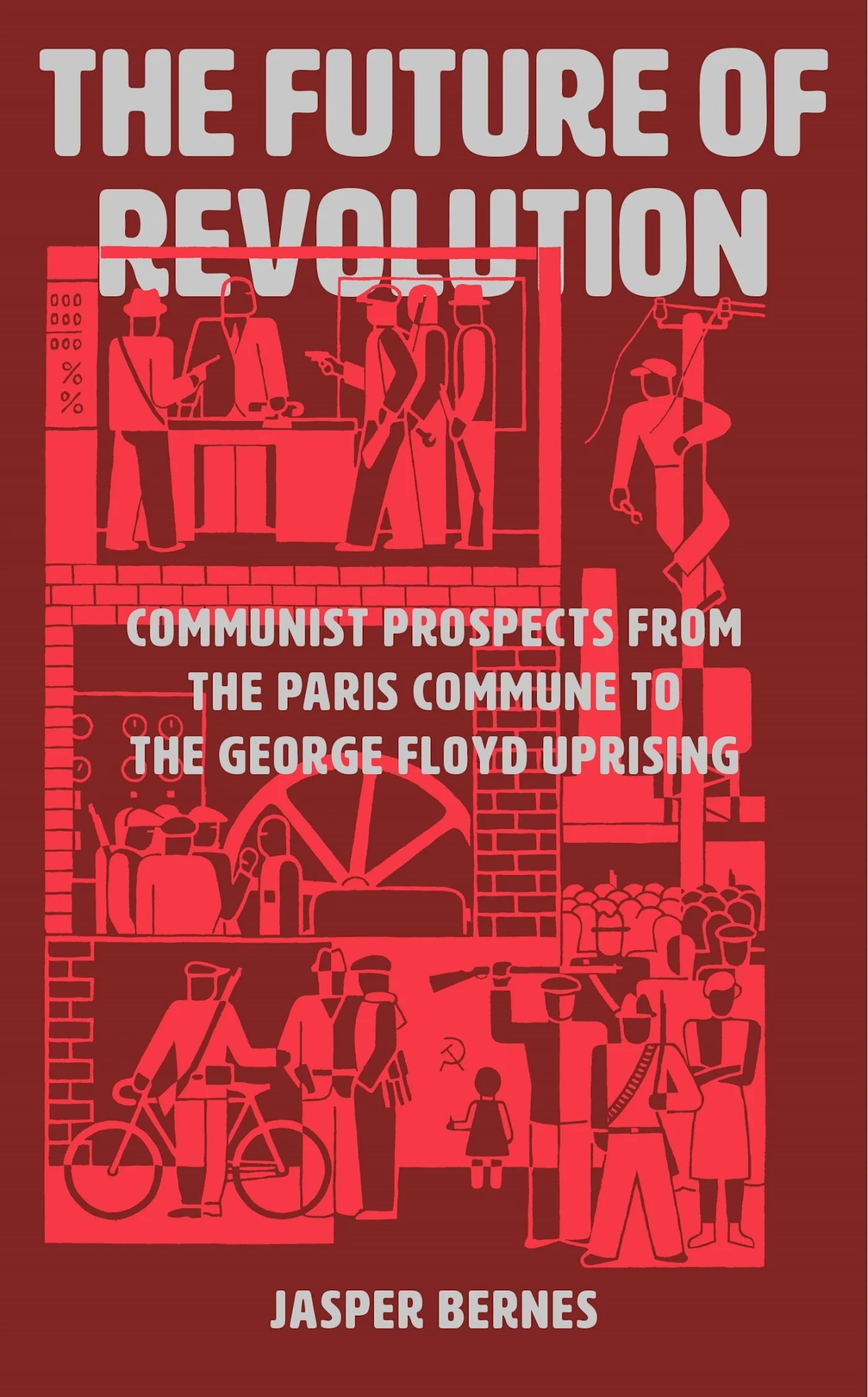
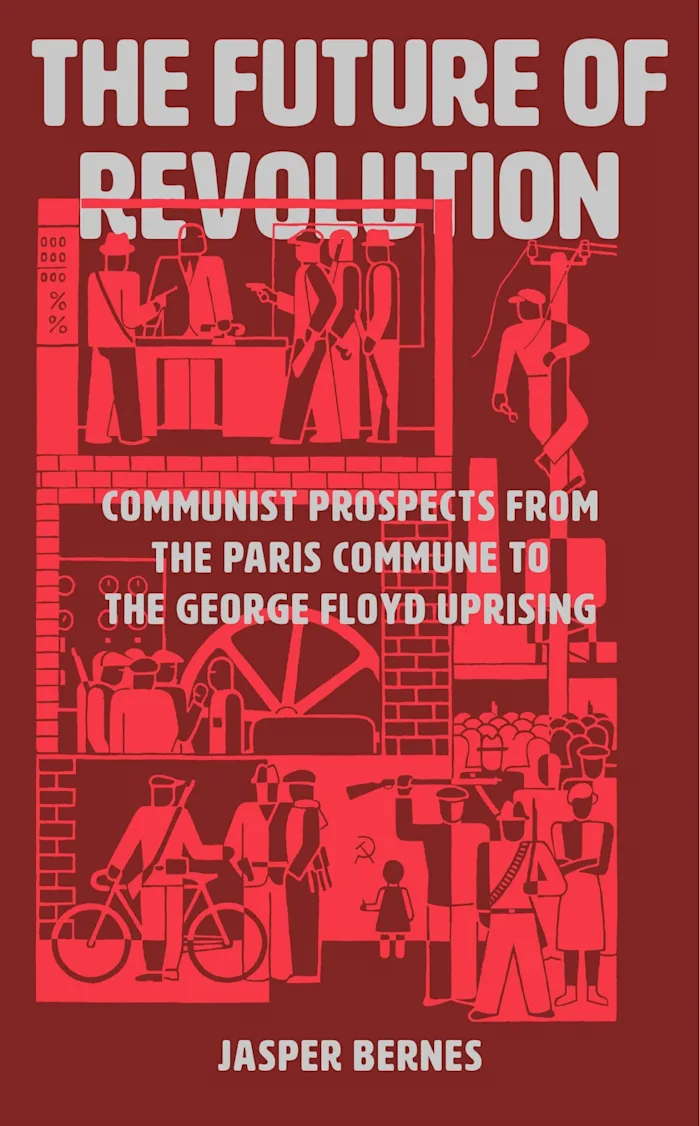
Images: Martine Franck
Notes
1. Vortex Group (ed.), The George Floyd Uprising, PM Press, 2023; Zhandarka Kurti and Jarrod Shanahan, States of Incarceration: Rebellion, Reform, and America’s Punishment System, Reaktion Books, 2022.↰
2. Idris Robinson, “How It Might Should Be Done,” Ill Will, August 16, 2020. Online here.↰
3. Adrian Wohlleben, “Memes Without End,” Ill Will, May 16, 2021. Online here.↰
4. This notion of map owes something to Fredric Jameson’s call for “cognitive maps” in his seminal essay on postmodernism. Fredric Jameson, “Postmodernism, or the Cultural Logic of Late Capitalism,” New Left Review 146 (July/August 1984): 89–92.↰
5. Jasper Bernes, “Logistics, Counterlogistics, and the Communist Prospect,” Endnotes 3 (September 2013).↰
6. Roland Simon and Théorie Communiste, “Théorie de l’écart,” Théorie Communiste 20 (September 2005); Roland Simon, “The Present Moment,” Sic 1, no. 1 (November 2011), 96. Online here.↰